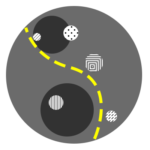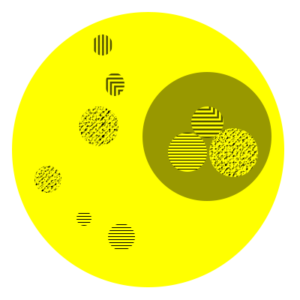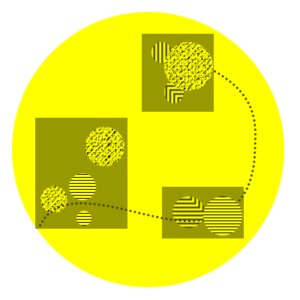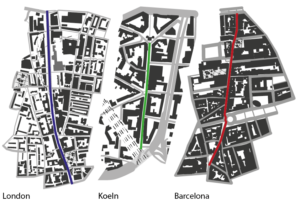 << Sensory Walks >>
<< Sensory Walks >>
How do you experience a city as a long term resident, a newcomer or a visitor? And how does your sensory experiences differ from those of the city's many other users? Would you like to explore your senses, learn how they are shaped by culture and connect to the sensory experience of others in the past and in the present? Here you will find some ideas for exercises to awaken your senses, links to talks & literature on the senses, examples of sensory walks of three cities and a ‘toolkit’ to make your own sensory walk.

i. Becoming attentive to your senses
We generally experience our environment with more than one sense at the time. While it is useful to focus on individual senses and understand how each sense frames our access to the world, it is also important to think about how senses interact. Which senses do you notice most? Are some sensory features so dominant that they overpower others? How do you think you might be conditioned by upbringing, education, or profession to pay more attention to some senses than to others? Do your perceptions change once you filter out a particular sense? Are you more attentive to it afterwards when focusing on all the senses again? We suggest to alternate focusing on the interaction of the senses with zooming in on particular senses.

ii. Sample Walks
Here are some examples of sensory walks: The first section links to the different experimental walks we did in three street across Europe - some multi-sensorial, some focusing on individual senses. The second section provides links to inspiring sensory walks focusing on smell, sound, taste, touch and temperature.

iii. Make your own Sensory Walks
You can adapt the following ‘exercises’ in any city. It does not matter whether it is an old or a new city, in the centre or the periphery, or whether you are familiar with it or not – as long as you act responsibility and respectfully.
Aims:
Having found the combination of interdisciplinary conversation and embodied fieldwork of our workshops beneficial for our own reflection, we want to share some of the ingredients that can help to feel, to reflect and to communicate. (We tried this out experimentally in Barcelona – see Cities/Streets). We suggest a format that is participatory, interactive and analogue to allow the senses to appear and to have conversations about their interaction and interpretation in a social space. But you can also do this on your own.
At the most general level the aims are to:
- become more aware of your own sensing
- understand that the senses are not neutral
- reflect on the unique sensory landscape of a street
- develop transferable skills for decoding other localities with the sensory tools learned
- develop as a reflective individuals and engaged citizen
Format:
A small group tour on foot (8-10 participants at most) would best allow these aims. The suggestions we make can be adapted to different age groups, and mobilities. The tour is not designed to be for outsiders but would indeed be enriched by a dialogue between locals, visitors and urban professionals.







